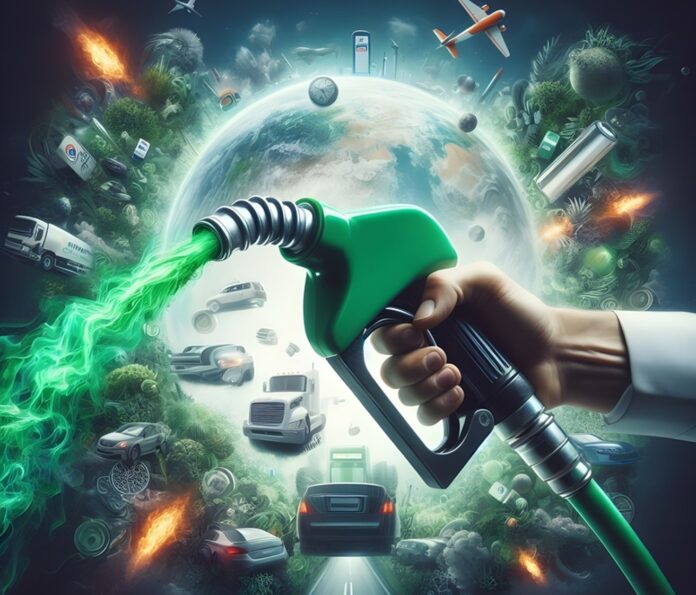Suleman Shafique is an SEO content writer with over a decade of experience. He is an accomplished translator working with content between English and Urdu and writes about business contributing to numerous blogs. His YouTube channel, TransTarjuma, is a testament to his translation skills.
This is Suleman’s first contribution to the 21st Century Tech Blog. He has taken on an interesting subject, the current usage of diesel fuel for transportation, diesel alternatives, and their continuing relevance for the future as climate change compels the global economy to decarbonize.
Diesel engines have long been the backbone of transportation, industrial machinery, and power generation. While their reliability and efficiency are unmatched, their environmental impact poses significant challenges in an increasingly carbon-conscious world. The path to decarbonizing diesel involves a multi-faceted approach combining innovative fuel alternatives, enhanced engine technologies, and strategic policy implementations.
The Evolution of Diesel Technology
Rudolf Diesel invented traditional diesel engines in 1893. Since then the technology has come a long way from initial designs. Modern diesel engines are significantly cleaner and more efficient than their predecessors, but the fundamental challenge remains their carbon footprint. The transportation sector contributes approximately 24% of global carbon dioxide (CO2) emissions. A significant portion comes from diesel-powered vehicles.
Renewable Diesel: A Drop-in Solution
One of the most promising pathways to decarbonization is renewable diesel, also known as hydrotreated vegetable oil (HVO). Unlike conventional biodiesel, renewable diesel is chemically identical to petroleum-based diesel, making it a true “drop-in” replacement requiring no engine modifications.
Produced through hydro-processing of vegetable oils, animal fats, or waste cooking oil, renewable diesel can reduce greenhouse gas (GHG) emissions by as much as 80% when compared to conventional diesel.
Renewable diesel advantages extend beyond environmental benefits. These include:
- Superior cold weather performance compared to biodiesel.
- Better engine performance because of higher cetane numbers. (Cetane for diesel fuels is the equivalent of octane for gasoline.)
- Reduced maintenance requirements.
- Complete compatibility with existing infrastructure.
Advanced Engine Technologies
Engine manufacturers are developing innovative technologies to reduce emissions and improve efficiency:
Digital Engine Management
According to IPD Pars, a distributor of Cummins parts for diesel engines, “Modern diesel engines employ sophisticated electronic control units (ECUs) that optimize fuel injection timing, pressure, and quantity in real-time. These systems can reduce both emissions and fuel consumption by ensuring optimal combustion conditions under varying loads and operating conditions.”
Waste Heat Recovery
Advanced waste heat recovery systems can capture and utilize thermal energy that would otherwise be lost through exhaust gasses. These systems can improve overall engine efficiency by 4-5%, significantly reducing fuel consumption and emissions.
Hybrid Systems
The integration of electric hybrid systems with diesel engines offers substantial benefits for specific applications. In urban delivery vehicles, for example, hybrid systems recover energy during braking and provide electric-only operation when in low-speed zones. This reduces diesel consumption, emissions and noise pollution.
Alternative Fuel Technologies
Beyond renewable diesel, several alternative fuel technologies show promise. These include:
- Hydrogen-Diesel Dual Fuel can be introduced into diesel engines as a supplementary fuel, reducing carbon emissions while maintaining the high efficiency of diesel combustion. This approach requires minimal engine modifications and can achieve significant CO2 reductions while preserving the power and torque characteristics that make diesel engines invaluable for heavy-duty applications.
- Dimethyl Ether (DME) provides a clean-burning alternative to diesel that can be produced from various renewable sources, including biomass and waste products. While requiring some engine modifications, DME produces virtually no particulate matter and can offer significant carbon reductions when produced from renewable sources.
Policy and Infrastructure Considerations
The successful decarbonization of diesel depends heavily on supportive policy frameworks and infrastructure development such as:
- Carbon Pricing is an effective pricing mechanism to help drive the adoption of cleaner diesel alternatives by making them more economically competitive with conventional diesel.
- Alternative Fuel Infrastructure is crucial for widespread adoption. This includes:
- Renewable diesel production facilities.
- Hydrogen fueling stations.
- DME distribution networks.
- Electric charging infrastructure for hybrid systems.
- Research and Government Support for clean diesel technologies is essential for advancing decarbonization efforts and maintaining economic competitiveness.
Challenges and Future Outlook
Several challenges must be addressed to achieve widespread diesel decarbonization. These include:
- Feedstock Availability requires scaling renewable diesel production sources that don’t compete with food production or cause negative environmental impacts.
- Driving Down The Cost through economies of scale will make alternative diesel more attractive. Currently, these greener diesel alternatives are more expensive. That has to change.
- Technical Barriers exist related to storage, distribution, and engine compatibility when using greener diesel substitutes to achieve widespread adoption.
Diesel’s 21st Century Future
The decarbonization of diesel engines will be a crucial step forward to help achieve global climate goals. The combination of renewable fuels, advanced engine technologies, and supportive policies should lead us there. The challenges described above are not insurmountable and the benefits of pursuing this transition extend well beyond environmental considerations to include improved air quality and energy security.
Low-carbon diesel appears to be increasingly achievable through the diverse mix of solutions mentioned above. The key to success is maintaining the momentum in technology development while ensuring solutions are practical, economically viable, and truly sustainable to meet the global low-carbon transition.
The diesel of the future will not be your grandfather and father’s diesel.









